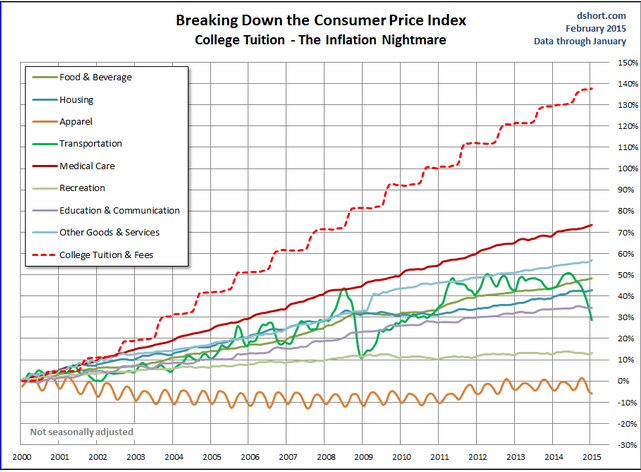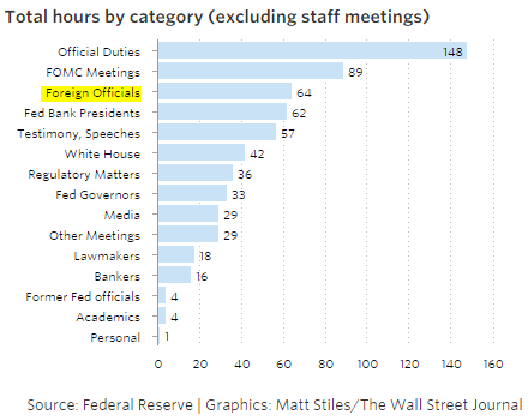February 28, 2015
The Consumer Price Index (CPI) is supposed to give us a good barometer of price changes in the economy. Unfortunately the CPI misses many big items like housing and college tuition. The latest report shows that the economy had a taste of deflation for the first time since the Great Recession hit. Of course this is going to provide more ammunition to the Federal Reserve to maintain negative interest rates that clearly are having an impact on the standard of living of Americans. Subprime lending is already booming again as banks chase after cash strapped Americans. You need to step back to understand the impact inflation is having on the economy overall. Blindly accepting that prices “need” to go up is easier than understanding how the Federal Reserve impacts the dollars in your wallet. The CPI is the official metric for price changes but if we look at it from a broader perspective, like looking at a forest from a plane versus looking at one tree on the ground, we realize the landscape is dramatically changing. Inflation is eroding the quality of life for most Americans.
The long inflation con on the public
Inflation wasn’t always a necessary part of our economy. The machinery of inflation came in dramatically with the founding of the Federal Reserve. The Federal Reserve controls the mechanism behind interest rates. It is the bank of all banks. The Fed with the Great Recession has had to dip into a multitude of archaic financial gimmicks to save banks and ultimately pass the cost onto Americans.
First, let us look at some history here:
From 1870 to 1930, a span of 60 years $1 US dollar held its value nicely. That is one full generation. But after abandoning the gold standard it is pretty clear what has happened. That $1 in 1930 is now the equivalent of five cents. That is the long-term impact of inflation. But you don’t need to go so far back to see this eroding power. Just go back to 2000:
From 2000, college tuition is up nearly 140 percent, housing is up nearly 60 percent, and medical care is up over 70 percent. Those are real significant changes. And this is being felt by most working Americans because wages have remained stagnant. The above changes are dramatic and are being felt throughout the economy. This is why today, we have $1.2 trillion in student debt outstanding. Many of the new jobs that pay a solid wage require a college education or credentialing. Unfortunately more jobs are being added in the low wage service sectors.
The Americans worker is being sacrificed here. Even if we look at where the Fed is spending their time, we are seeing more reliance on our international lenders:
Janet Yellen at the Fed is spending a significant amount of time with foreign officials in high level meetings. That should tell you where priorities are shifting. The Fed continues to hint at tapering and moderating their balance sheet growth but there are little signs of that. In the eyes of big money, the Fed is doing a superb job and the wealthiest in our world are doing fantastically well. Yet a large part of this comes in the rentier system that is being built. A perfect example is Wall Street diving into single family homes and turning them into rentals. The end result has been higher rents, less supply of homes for regular families, and ultimately having more money funneled back to investment banks for producing nothing new. Also, the CPI looks at the owners’ equivalent of rent (OER) which fails to account for actual mortgage payments – this is how the first housing bubble was missed and also missed the massive rise in home prices in 2013.
Inflation is a very real event yet very little of this is discussed in the mainstream press. Every month we get a muted CPI report and people go on with their business. But over time, the aggregate impact is very dramatic (just look at the price changes going back to 2000). If you don’t believe the above data, just look at your budget and where your spending has gone over the last 15 years. You’ll realize the CPI data is a big deception.








